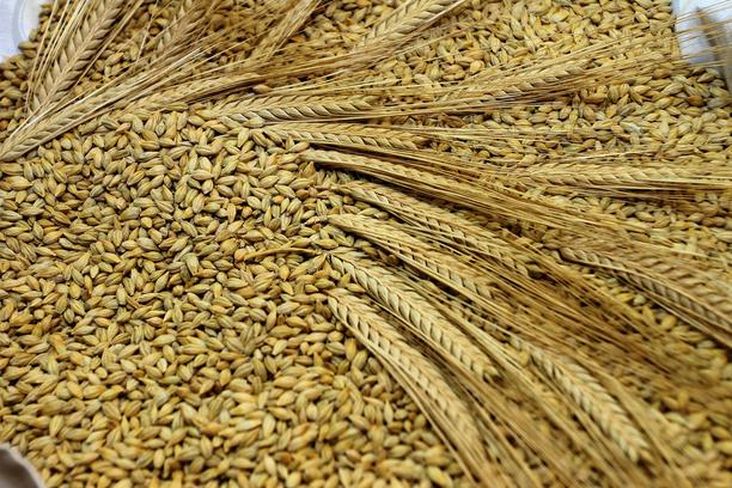Waiting game continues for Australian barley producers

Australian and Chinese officials met in Beijing last week to discuss ongoing trade disputes, signalling a potential thawing of trade relations ahead of the release of the World Trade Organization’s ruling on Australia’s complaint about unofficial barley tariffs imposed by China back in 2020.
The final WTO report on the barley dispute was reportedly due to be delivered to both parties late last week, following the delivery of an interim report sometime in March. However, there has been no confirmation forthcoming from either party. China allegedly has been pressing Australia for the past three months to drop the barley complaint and resolve the issue through diplomatic channels to avoid a strike against its name at the WTO.
Under the WTO dispute resolution process, the ruling on whether trade rules have been broken and the required remedies will be distributed to all WTO members within three weeks of the final report, and its recommendation adopted within 60 days unless there is an appeal by either party.
In November 2018, China initiated an anti-dumping and countervail investigation into Australian barley exported to China in the 12 months beginning 1 October 2017. Dumping occurs when a company exports a product at a price lower than it normally charges in its home market. Countervail cases examine whether dumping has occurred because a foreign government has provided subsidies or tax benefits to its producers.
After an 18-month investigation, the Chinese Ministry of Commerce concluded that both dumping and subsidisation had occurred. On 19 May 2020, it imposed a combined 80.5pc tariff on Australian barley, comprised of a 73.6pc anti-dumping duty and a 6.9pc countervailing duty. On 21 December 2020, Australia lodged an appeal in the WTO claiming the duty measures were inconsistent with provisions under the WTO’s Anti-Dumping Agreement, the Agreement on Subsidies and Countervailing Measures, and the General Agreement on Tariffs and Trade (GATT) 1994.
Before the tariffs were imposed, China was the primary destination for Australian malting barley and a key buyer of feed barley. While the tariffs immediately halted all new barley business with China, most existing deals were honoured. The last shipment of Australian barley to China was a 33,000t cargo of malting barley that departed the Port of Melbourne in September 2020.
In the Australian grain-marketing year ending 30 September 2020, China imported 1.534 million tonnes (Mt) of Australian barley, but the tariffs impacted sales in the last four months of that year. Malting barley shipments totalled 1.043Mt or 77.8pc of Australia’s total malting barley exports for the season. Feed barley exports totalled 491,000t, making up 26pc of the season’s total feed barley sales. The unrelenting drought in the eastern states of Australia also significantly impacted the volumes available for export during the 2019-20 season.
Barley export volumes to China were significantly higher in the 2018-19 season at 2.377Mt. Malting barley shipments totalled 1.731Mt or 89.9pc of the entire season’s exports classified as malting barley. Feed barley sales came to 646,000t, or 37pc of total feed barley exports in 2018-19.
Last week’s discussions reportedly included officials from China’s Ministry of Commerce and Australia’s Department of Foreign Affairs and Trade. While there has been a resumption of coal trade between Australia and China in 2023, the barley tariff dispute is considered far more complex, requiring “highly technical” discussions, according to Australia’s Assistant Trade Minister Tim Ayres. The complications around the barley trade impediments relate to the unofficial nature of the Chinese sanctions.
There is engagement and momentum, and officials on both sides appear prepared to enhance dialogue at all levels of government to negotiate a full resumption of trade. The recent meetings have reportedly set the scene for an official visit to China by Trade Minister Don Farrell in April. While a formal invitation is believed to have been accepted, a date is yet to be set for the high-level talks.
Since the Chinese tariffs were introduced in 2020, France has been a significant supplier of barley to Chinese maltsters, and to a lesser degree, the stockfeed market. The imminent WTO ruling pressured French values lower in late March, with European traders concerned that their free swing into the Chinese market could be about to end.
New-crop barley deals were reported at a basis of €14-15/t under the December MATIF milling wheat futures contract CPT (Carriage Paid To) Rouen at the end of March against trades of only €2/t under just a week earlier. Exporters are reportedly quite nervous about the outcome of talks between Australia and China and the possible resumption of barley trade. Strong Chinese demand for French barley kept export values in line with French milling wheat in recent months, but that correlation has broken down as uncertainty around demand for new crop French barley rises.
The last reported barley sales into China were in the US$315-317/t CFR (cost and freight) range for delivery in the new-crop European slot of July-August. Nevertheless, Chinese buyers appear to have put the cue in the rack for the time being, awaiting the outcome of the intergovernmental discussions and Australia’s appeal to the WTO.
Taking current Russian values as the low water mark, barley out of South Australia and Western Australia would be more than competitive on a CFR basis into China. Against French values, there would be some upside for the grower and margin for the exporter. However, assuming the northern hemisphere spring is kind, the next Chinese buying campaign will likely be in May, when there is more certainty around Russian, Ukrainian and French production. In the meantime, the waiting game continues for Australian growers and exporters.
Read also
Wheat in Southern Brazil Impacted by Dry Weather and Frosts
Oilseed Industry. Leaders and Strategies in the Times of a Great Change
Black Sea & Danube Region: Oilseed and Vegoil Markets Within Ongoing Transfor...
Serbia. The drought will cause extremely high losses for farmers this year
2023/24 Safrinha Corn in Brazil 91% Harvested
Write to us
Our manager will contact you soon



